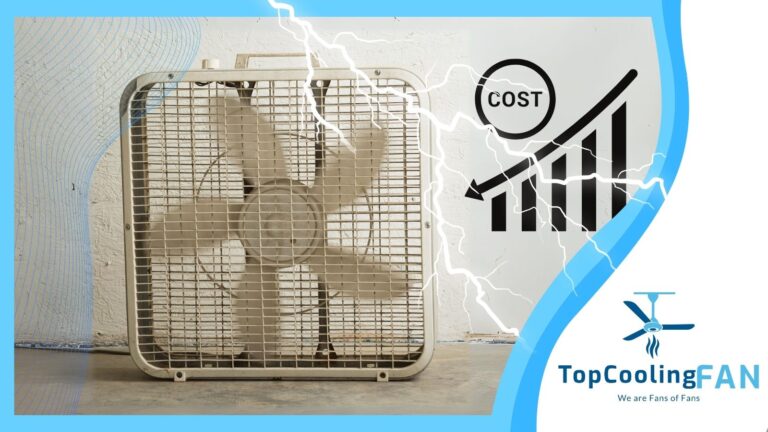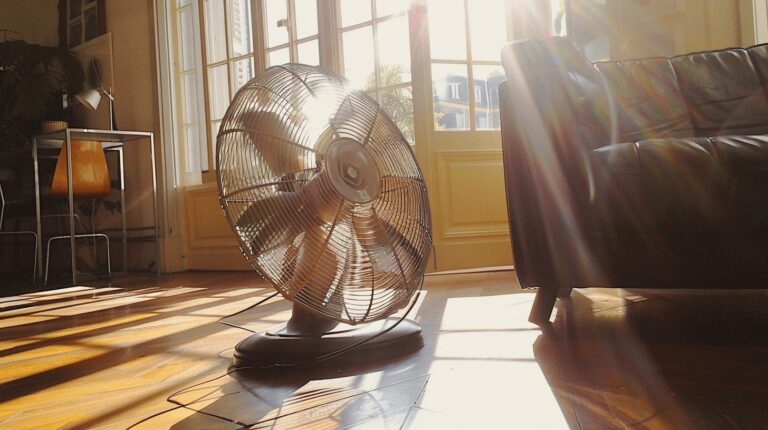Clean Box Fan Maintenance: Quick and Easy Tips
Maintaining a clean box fan is essential for its efficiency and the air quality in one’s home. Over time, fans tend to accumulate dust and debris, which can hinder their performance and release allergens into the environment.
A regular cleaning schedule keeps these appliances in top working condition, ensuring they do their job of circulating air without contributing to indoor air pollution.
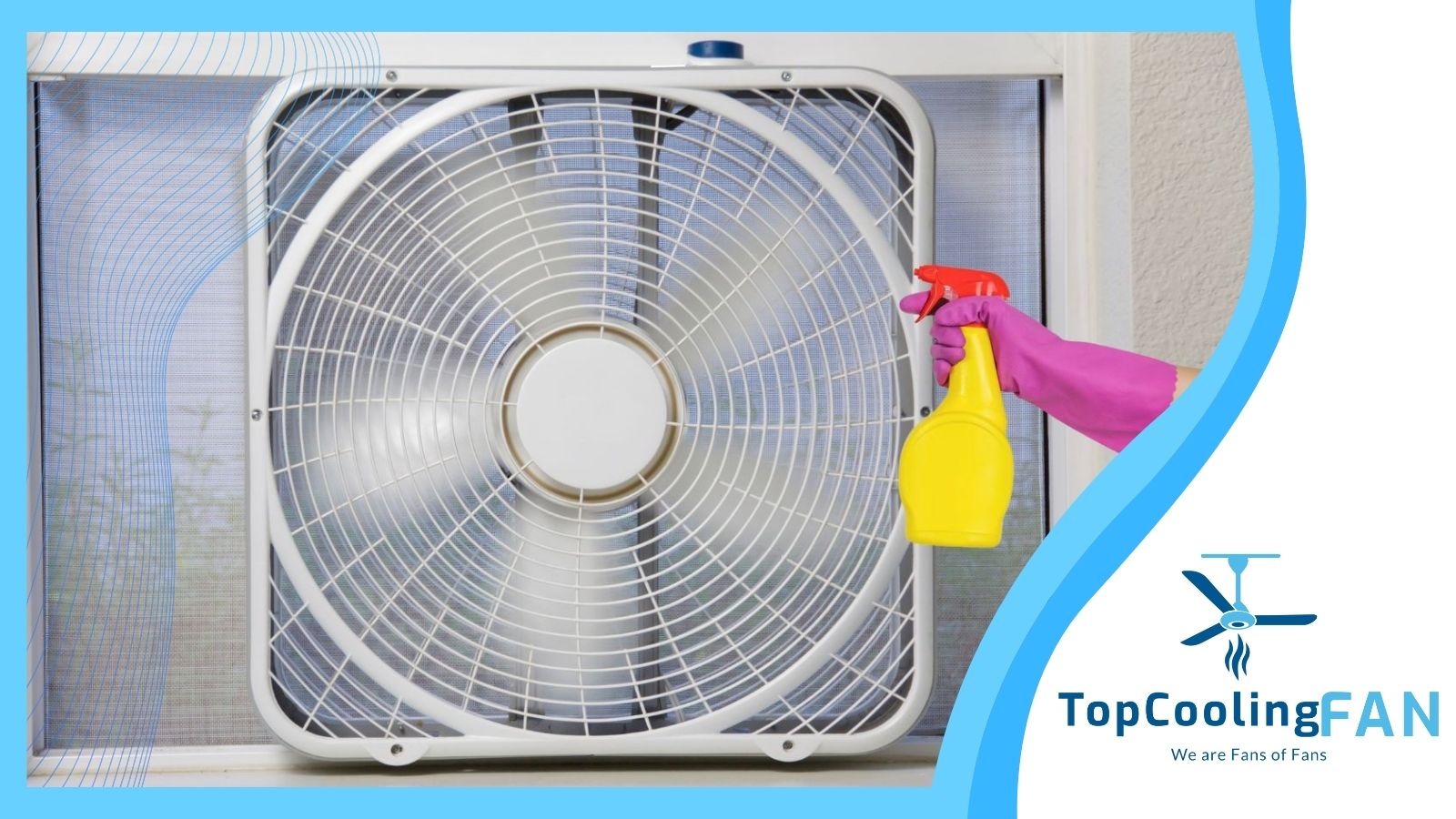
Cleaning a box fan might seem daunting at first, due to the various parts and potential for mess, but with the right approach, it can be a simple task.
By disassembling the fan following the appropriate steps, one can thoroughly clean each component, allowing the fan to operate more effectively. Whether one’s fan requires a quick dusting or a more thorough wash, understanding how to clean it properly can prolong the appliance’s life and improve its functionality.
This process not only results in a cleaner fan but also contributes to a fresher and more pleasant living space.
Safety Precautions
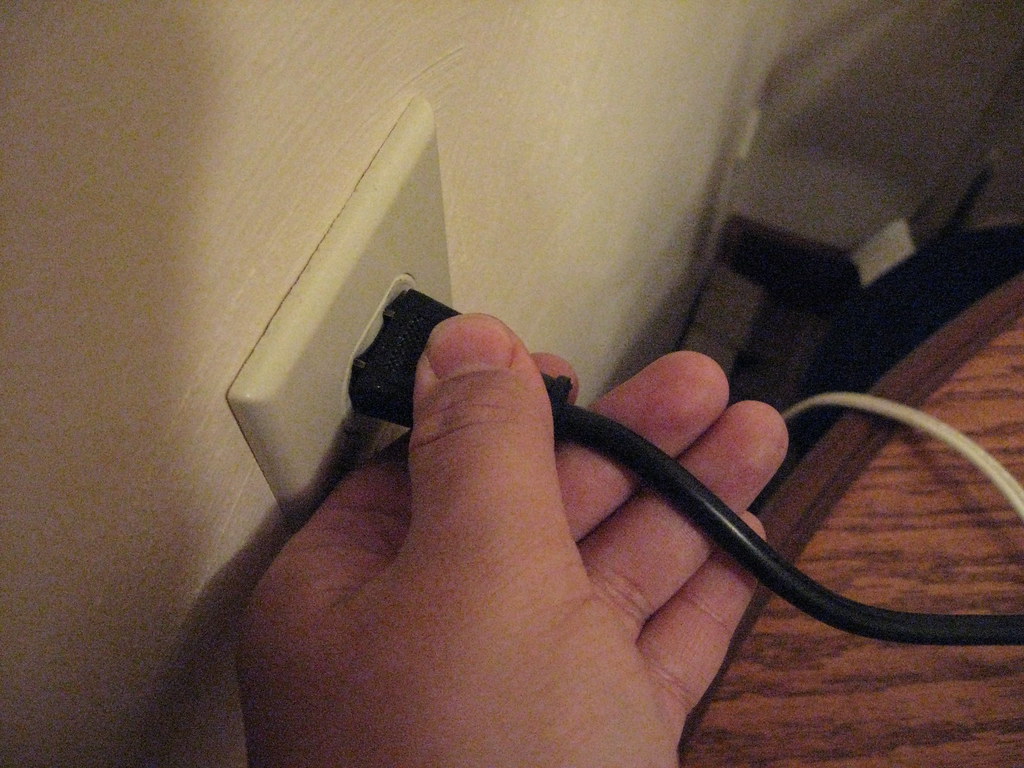
When cleaning a box fan, safety should always be the first priority. It’s essential to mitigate any risk of electrical hazards and to protect oneself from dust and debris.
Unplug the Fan
Before any cleaning begins, always unplug the fan from the electrical outlet. This is a critical first step to prevent any electrical shock or fire hazard that could arise from interacting with the appliance’s electrical components while cleaning.
Use Protective Gear
To safeguard against breathing in dust, it’s advisable to wear a dust mask or protective mask. Goggles can protect the eyes from any particulate matter that might become airborne during the cleaning process. Gloves are also beneficial to protect the hands from sharp edges and any cleaning agents used.
Preparation
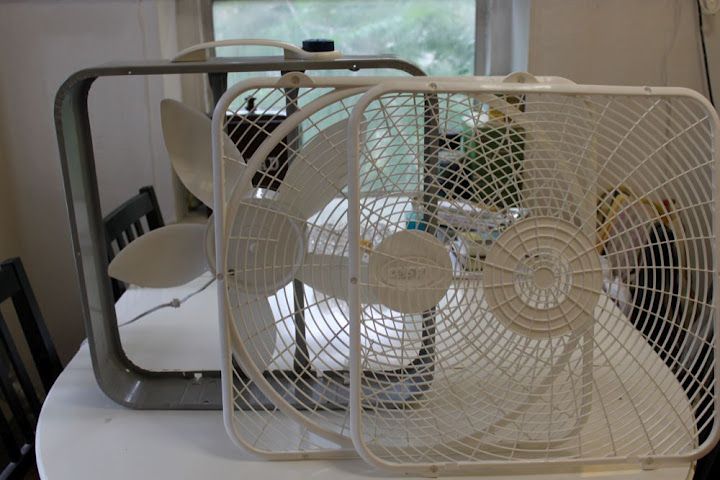
Before diving into the task of cleaning a box fan, one should ensure they have all the necessary cleaning supplies and a clear work area. This approach guarantees efficiency and safety during the cleaning process.
Gather Cleaning Supplies
To effectively clean a box fan, one needs to assemble a few key items:
- Vacuum cleaner with a brush attachment for gentle dust removal
- Screwdriver to disassemble the fan if necessary
- Damp cloth to wipe down surfaces
- Mild detergent for deeper cleaning tasks
Having these tools and supplies at hand will streamline the cleaning session.
Prepare Your Work Area
Before starting, it’s crucial to prepare a safe and suitable work area:
- Ensure there is a flat surface, such as a table or the floor, to work on.
- Lay out a towel or sheet to catch any drips or debris.
- Confirm the work space is well-ventilated, especially if using detergents.
A well-prepared work area helps avoid damage to both the fan and the surroundings.
Cleaning Process Overview
Maintaining a box fan involves several key steps to ensure it operates effectively and remains dust-free. Cleaning requires attention to components such as the blades, grille, and housing for a thorough job.
Disassemble the Fan
First, unplug the fan for safety. Then, remove the screws that secure the grilles to the frame, and place them in a container to avoid loss. The grilles usually detach with a gentle but firm pull after the screws are out.
Dust the Blades and Grille
Using a compressed air canister or a vacuum with a brush attachment, one can remove loose dust from the blades and fan grille. A microfiber cloth is also effective for wiping off accumulated dust without scratching the surfaces.
Wash and Rinse Components
Soak a sponge or cloth in a mild soapy water solution to cleanse the blades, grille, and housing. Avoid getting water on the motor or electrical components. If needed, a hose can be used to rinse the parts, but make sure to do this gently to avoid water damage.
Dry Thoroughly
Before reassembling, ensure all parts are completely dry to prevent moisture from causing electrical issues or rust. Parts can be air-dried or wiped with a dry cloth.
Reassemble the Fan
Once the components are dry, align the blades and grille back to their original positions, and re-secure with screws. The fan should now be clean and ready for use.
Deep Cleaning Tips
Deep cleaning a box fan ensures that it operates efficiently and safely. Over time, fans can accumulate a significant amount of dust and grime that can impede their performance and output.
Remove Stubborn Grime
Grime buildup on fan blades and covers can reduce a fan’s efficiency. Start by vacuuming to remove loose dust. Then, for areas with stubborn grime, use a damp cloth or sponge along with a mild detergent to gently scrub the surfaces. A toothbrush can be highly effective for tackling grime in crevices and along edges.
Tend to The Motor
The motor is the heart of the box fan and requires careful attention. Before cleaning, always ensure the fan is unplugged. Then, use a dry cloth to wipe the exterior.
If accessible, a can of compressed air can dislodge dirt from the motor’s components. For lubricating, apply a drop of motor or mechanical oil to the motor’s bearings to keep it running smoothly.
Cleaning Hard-to-Reach Areas
Hard-to-reach areas, such as the back of the fan and the space between the blades, can be challenging. Use a toothbrush or a specialized cleaning brush to dislodge dirt from these areas. Then, vacuum with a hose attachment to effectively remove dust from places that are difficult to access manually.
Performance Maintenance
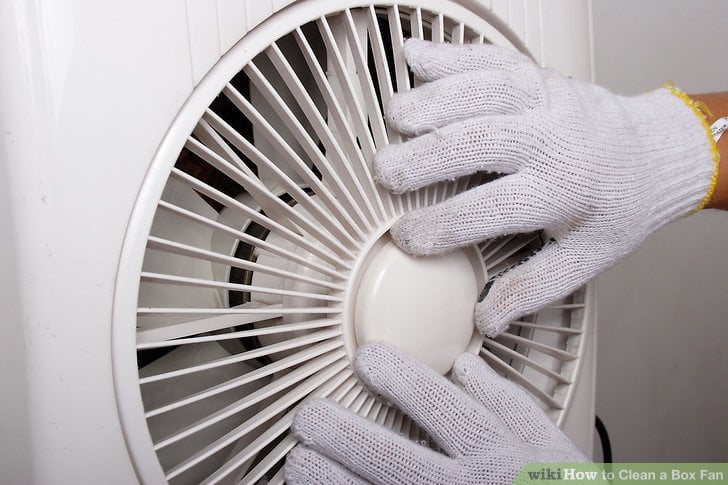
Proper maintenance is crucial to ensuring a box fan operates efficiently, maintains good air quality, and enjoys a long service life. By adhering to regular upkeep routines, owners can optimize performance and prevent breakdowns.
Regular Cleaning
Regular cleaning is essential to maintain the performance and longevity of a box fan. They should gently clean the fan blades and grills to remove dust and debris, which can be done with a soft brush or cloth.
A cleaning mixture of mild detergent and water, applied with a damp cloth, can tackle more stubborn grime without causing damage to the fan components. For more detailed cleaning methods, one can learn how to clean a box fan thoroughly.
Optimize Air Flow
To achieve optimal airflow, it’s imperative to ensure the fan’s surrounding area is clear of obstructions. Furniture or objects that block the front or back of the fan can restrict air movement, diminishing its cooling effectiveness.
Additionally, they can periodically check the alignment of the fan blades to ensure they are not bent, as this can cause poor airflow and unnecessary strain on the motor.
Inspect and Repair
Routine inspection of a box fan will help catch any potential issues before they escalate. Owners should inspect the fan for loose screws, signs of wear, or unusual noises, and oil the motor if the manufacturer’s instructions recommend it.
If any parts appear damaged or worn out, prompt repair or replacement is advised to maintain air quality and fan performance. Techniques to clean a box fan without taking it apart can also be useful for basic upkeep without disassembly.
Aftercare and Storage
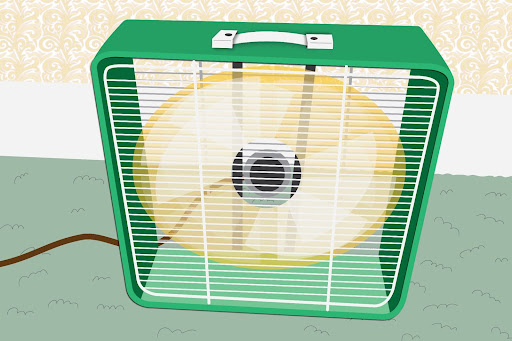
After thoroughly cleaning, ensuring the proper aftercare and storage of your box fan will extend its lifespan and maintain its efficiency. Properly storing the fan protects it from dust accumulation and other potential damages when it’s not in use.
Storing Your Fan
When preparing a box fan for storage, dry the fan completely to prevent mold and mildew. Then, select a dry location, away from sources of direct sunlight or moisture, to place the fan.
If available, enclosing the fan in a protective storage bag or wrapping it with a clean cloth will keep the fan dust-free. The storage area should be spacious enough to accommodate the fan without bending any parts.
Routine Checks
Regular maintenance checks are as crucial as the initial cleaning process. Before using the fan again, they should inspect the base and case to ensure they’re still stable and intact, with no cracks or breaks.
Checking the fan cover and ensuring it’s secure can prevent accidents. Regular cleaning, such as a brief dusting or a wipe-down with a dry cloth, will also keep the fan in top condition for its next use.
Fan Operation and Efficiency
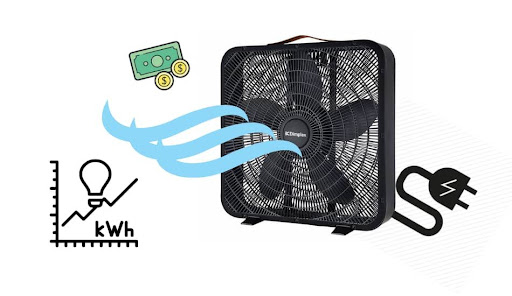
Proper fan maintenance and understanding of fan mechanics are crucial for maximizing air circulation and ensuring energy efficiency.
Keeping a box fan clean and well-adjusted can lead to more optimal airflow. This enhances the fan’s ability to circulate cool air effectively.
Maximizing Air Circulation
To maximize air circulation, it’s essential to position a box fan to create the best airflow pattern.
They recommend positioning the fan in a window or doorway to pull in fresh air or exhaust stale air. It’s also beneficial to create a cross breeze by placing fans strategically throughout the space.
Adjusting the angle of the fan can also help direct the cool air to the desired area.
Understanding Fan Mechanics
The mechanics of a box fan are relatively simple, consisting of blades, a motor, and a housing structure. The motor powers the blades, which push air forward to create a breeze.
For increased efficiency, the fan should be set to operate at the optimal speed that balances air movement with energy use.
Low-speed settings are usually more energy-efficient while still providing adequate air circulation.
Troubleshooting Common Issues

When a box fan starts acting up, it’s often due to noise, vibrations, or moisture issues. Properly addressing these common problems can extend the lifespan of the fan and improve its efficiency.
Dealing with Noise and Vibrations
Noises and vibrations in box fans are usually caused by dust buildup or loose parts. To tackle these issues:
Clicking noise: A clicking sound often indicates a foreign object or an obstruction in the blades’ path. Users should turn off the fan and clean the blades thoroughly. Sometimes the blade itself might be out of alignment, and carefully bending it back into place can eliminate the noise.
Squeaking or grinding noise: This could be a sign that the motor needs lubrication. Applying a light machine oil to the motor bearings can help reduce friction and quiet the fan.
Vibrations: If the fan is vibrating, it might be due to an uneven surface or imbalance in the blade alignment. Placing the fan on a flat surface or adjusting the blade positioning can often resolve this issue.
For more detailed instructions on fixing fan noise and vibration problems, homeowners can seek guidance on Troubleshooting A Box Fan That Keeps Slowing Down.
Avoiding Moisture Damage
Moisture can severely impact a box fan’s performance and even pose safety risks. To prevent moisture damage:
Placement: Always place the box fan in a dry area and avoid using it near windows where rain can come into contact with the unit.
Storage: When not in use, store the box fan in a dry, indoor environment to prevent rust and electrical issues.
Air purifier function preservation: If the box fan is used as part of an air purifier setup, it’s vital to protect the filter from moisture, which can lead to mold growth and reduced air purification efficacy.
Proper maintenance, including periodic cleaning and dry storage, can prevent moisture from harming the box fan. For additional moisture management tips, one can reference 7 Most Common Problems With Box Fans (And How to Fix Them).
Additional Considerations

When maintaining a box fan, it’s not only the cleanliness of the fan itself that matters. One must also consider the broader implications of their maintenance routine, including environmental aspects and the mitigation of allergens.
Environmental Impact
A key aspect of box fan maintenance is minimizing the environmental impact. This includes responsibly disposing of any replaced parts, such as old air filters or worn-out grilles.
Remember that reducing waste isn’t just good for the fan—it’s beneficial for the environment.
Users should be encouraged to recycle parts whenever possible and to use natural, non-toxic cleaning solutions to lessen their ecological footprint.
Dealing with Allergens
Managing allergens is crucial in maintaining a box fan, especially for individuals with allergies.
A properly cleaned fan helps prevent the accumulation of dust and debris, which includes common allergens like pet hair. Here are some tips for allergen reduction:
- Regular Cleaning: Routine removal of dust from fan blades and grilles can significantly reduce allergen presence.
- Air Filter Maintenance: If the box fan has an air filter, it should be checked and replaced according to the manufacturer’s guidelines to ensure it efficiently traps allergens.
- Deep Clean: Periodically, a more thorough clean may be necessary to address any buildup of dust and allergens within the fan’s interior components.
Frequently Asked Questions
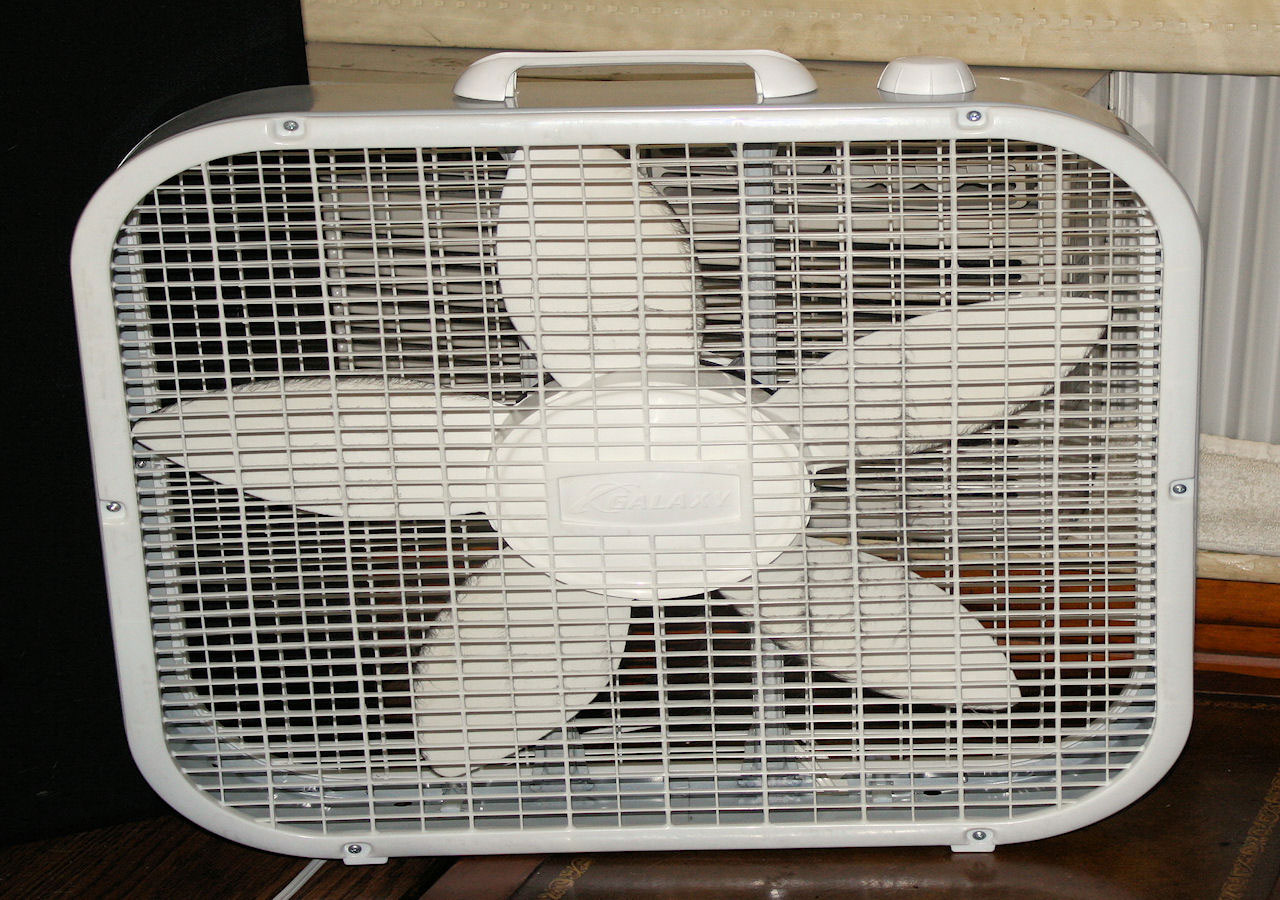
In this section, readers will find answers to common concerns regarding the maintenance and usage of box fans.
Can I Use a Fan to Clean the Air?
No, a box fan is not equipped to purify air. It merely circulates the air within a room, which may improve air distribution but does not filter out pollutants or allergens.
How Often Should I Clean My Box Fan?
One should clean their box fan at least twice a year to maintain optimal performance. However, if the fan is used frequently or in a dusty environment, increasing the cleaning frequency is advisable.
Key Steps for Maintaining a Clean Box Fan:
- Unplug the fan.
- Dust the exterior with a soft brush.
- Clean the grill and blades with a damp cloth.
- Vacuum the vents and crevices.
- Allow the fan to dry before plugging it back in.
The fan must remain unplugged throughout the cleaning process to prevent any electrical mishaps. Using a soft-bristle brush or a vacuum with a brush attachment contributes significantly to the effectiveness of the cleaning process. You can also employ a can of compressed air to dislodge any persistent dust within the fan’s vents.
You can carry out these steps regularly to ensure sustained air quality and performance. It’s not necessary to disassemble the fan, as explained by several guides online, including at Cleanestor and Clean Stuff Easy. These practices will help maintain a clean, efficient, and fully operational box fan.

